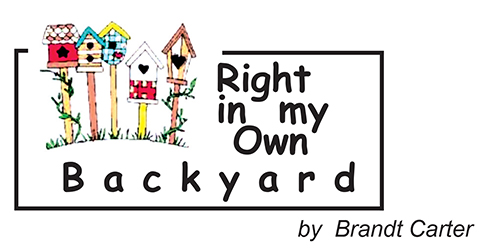
|
Broad Ripple Random Ripplings

The news from Broad Ripple
Brought to you by The Broad Ripple Gazette
(Delivering the news since 2004, every two weeks)

|
| Brought to you by: |

|

|

|

|

|

|
Converted from paper version of the Broad Ripple Gazette (v07n22)
Right in my Own Backyard - Tree Branches Offer Fall Treats - by Brandt Carter
posted: Oct. 29, 2010

Tree Branches Offer Fall Treats
Crisp nights and waning warm days makes me savor fall. I delight in kicking dry leaves on the sidewalks and watching trees change color. My last small tomatoes are green tomatoes and will have to be fried. Squash, pumpkins, and herbs are straggling. But, wait. . . look up in trees; Indiana has more bounty to enjoy. Some of her trees have surprises: persimmons, pawpaws, shagbark hickory nuts, black walnuts, and acorns.
You can tease your palate with fall treats. Many small towns have persimmon festivals. This native tree bears an orange, waxy fruit the size of a plum. Anyone brave enough to eat a raw persimmon will likely pucker up and wince. When ripe persimmons drop to the ground, sweet and mellow, but they must be sieved to remove the seeds. Processed pulp, combined with nutmeg, cinnamon and other ingredients, makes delicious puddings, cakes, and cookies. Persimmon desserts can be soupy in consistency or dense like a brownie in texture. Served warm or chilled with a big dollop of whipped cream, this is a perfect Hoosier seasonal delicacy.
Pawpaws are another fall fruit of native trees. When opened, the fruit's flesh is a bright yellow to yellowish brown - a nice accompaniment for different sweet or savory dishes. Pawpaws are perishable, lasting only a few days out of refrigeration. This fruit can also be pureed like the persimmons and frozen for future use.
Nut trees growing in Indiana offer still more seasonal pleasures. The Indiana Nut Growers Association lists reliable nut trees such as chestnuts (almost fat-free), heartnuts, hazelnuts, filberts, hickory nuts, hicans (hickory-pecan hybrid), pecans, and Persian walnuts (English walnuts). Our native shagbark hickory, walnuts, butternuts, and black walnuts are in many woods and easements. Surprisingly, acorns were also considered staple nuts in pioneer days but have fallen out of favor in modern day diets.
Lots of nut varieties present a challenge to getting at the nutmeat. For some, cracking the outer shell can be utterly maddening. Some require drying. Acorns (best from White Oaks) require soaking and multiple boilings to release tannins. How well I remember my dad taking a hammer to black walnuts and butternuts. Storing them in air-tight containers yields a marvelous accent for cookies, candies, and cakes.
If you have a backyard that needs a tree, try planting a native fruit or nut tree that will yield gratifying harvests for years to come. It's such fun to welcome this season with gathering, cracking, cooking or baking, and enjoying fall's bounty. We can take a final lesson from a nut tree, "Every oak tree started out as a couple of nuts that decided to stand their ground."
Brandt Carter, artist, herbalist, and naturalist, owns Backyard Birds at 2374 E. 54th Street. Visit her web site www.feedbackyardbirds.com. Email your bird questions to Brandt@BroadRippleGazette.com
brandt@broadripplegazette.com

|

|

|
| Brought to you by: |

|

|

|
| Brought to you by: |

|

|

|
| Brought to you by: |

|

|

|
| Brought to you by: |


